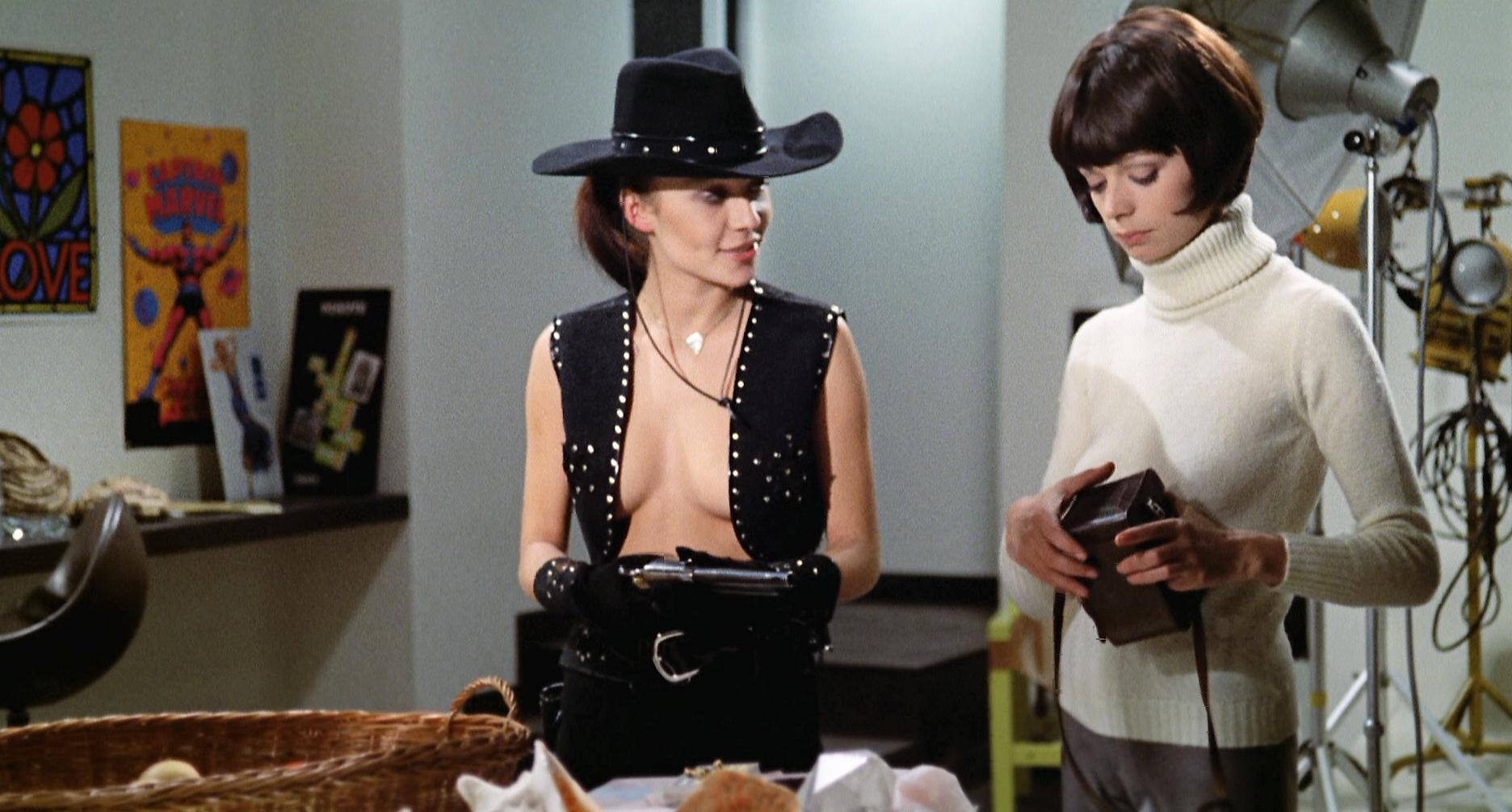
Italian artist Guido Crepax created the character of Valentina, a photojournalist, in 1965. For about 30 years, he told stories of her unusual and often erotic adventures, often accompanied by her companion, Phillip Rembrandt. The stories dip in and out of fantasy and science fiction.
Crepax’s work falls firmly into the “not for everyone” category with its blend of psychedelia and eroticism, but it’s easy to be pulled into his world with his delicate lines and striking designs. It’s hard not to admire it even if the subject matter doesn’t always appeal.
The “Baba Yaga” storyline sees Valentina nearly being hit by a car driven by the titular character. Things become more and more complicated from there as Valentina falls under Baba Yaga’s spell, somewhat willingly. Some people end up dead because of Valentina’s now-cursed camera and there are doll doppelgangers that sometimes come alive.
Yes, trying to explain it, it all sounds silly but the comic blends what’s real and what’s not in such a masterful way. It’s purposefully disorienting as it becomes harder and harder to tell what is reality and what is dreams. It’s also easy to understand how Valentina is drawn into this world — much like the comic, it’s both scary and sexy — and Crepax communicates the allure of this world well. The Fantagraphics reprints of his work serve the artwork incredibly well here — the books are huge and it becomes easy to be engrossed into the world Crepax created.
Certainly, there are plenty of mostly naked women wearing thigh-high fishnets (this is a Crepax story, after all) but as the “Baba Yaga” saga continues (even beyond just the first story), it becomes a trippy look at family and trauma. I wouldn’t necessarily call it particularly deep but I was surprised by the direction it went.
It’s hard for me to know how much Baba Yaga (1973, directed by Corrado Farina) works if you haven’t read the comic. It’s so reliant on familiarity with the source material for audiences to really have a good sense of what’s going on, although it’s a pretty liberal adaptation overall.
It’s stylish, at least, from the very beginning, with a great title sequence featuring Crepax’s art.
Lead actress Isabelle De Funès certainly looks the part as Valentina but due to dubbing, it’s hard to tell how good of an actress she is here. Valentina’s overall characterization seems a little less self-assured than her comic counterpart, though.
Carroll Baker’s Baba Yaga works fairly well, although I don’t think Baker quite manages to sell the sexy menace that’s required here. The movie switches out Phillip for Arno Treves (George Eastman), although Arno could’ve just been let out of this movie entirely since he really does nothing.
There are some self-aware touches, like Valentina and Arno flipping through a copy of Crepax’s Bianca before an abstract sex scene that’s basically pulled straight from the pages. I like the arty quality of that, but it doesn’t feel like it really has a place in this movie, nor does the random political conversations Arno and Valentina have. This movie is all over the place and a few attempts at dream sequences don’t work.
There are several things that worked in the comic that don’t quite land in this movie, specifically Baba Yaga’s gift of the doll, Annette, to Valentina. Yes, that was odd in the comic but ultimately felt creepy. Here, Valentina accepting a doll in bondage wear from a witch who lives in a weird house with a hole in the floor just comes across as goofy.
The languid, surreal pacings works pretty well but then the movie wraps up fairly quickly. Baba Yaga never quite felt like a villain and Valentina defeats her pretty easily (Arno really does nothing, let me repeat). Everything just feels like it goes back the status quo, with maybe a bit a question of Baba Yaga’s actual fate.
This was sold as a sexy, horror movie but it’s really neither that sexy (there are some topless women but that’s about it) nor is it really scary at all (unless you’re scared of dolls, maybe). The international cut is only about 80 minutes (Farina’s original cut was lost) and it does feel like there may have been some elements that were developed a bit more.
The Baba Yaga movie is an odd one to me because I think it’s actually a fairly decent adaptation of Crepax’s work but not really one that can stand on its own. It mostly just made me want to go read the comic again.
There was a Valentina Italian TV series from 1989 that also adapted “Baba Yaga” for its first episode. I’ll write about that on my Patreon later this week.

